

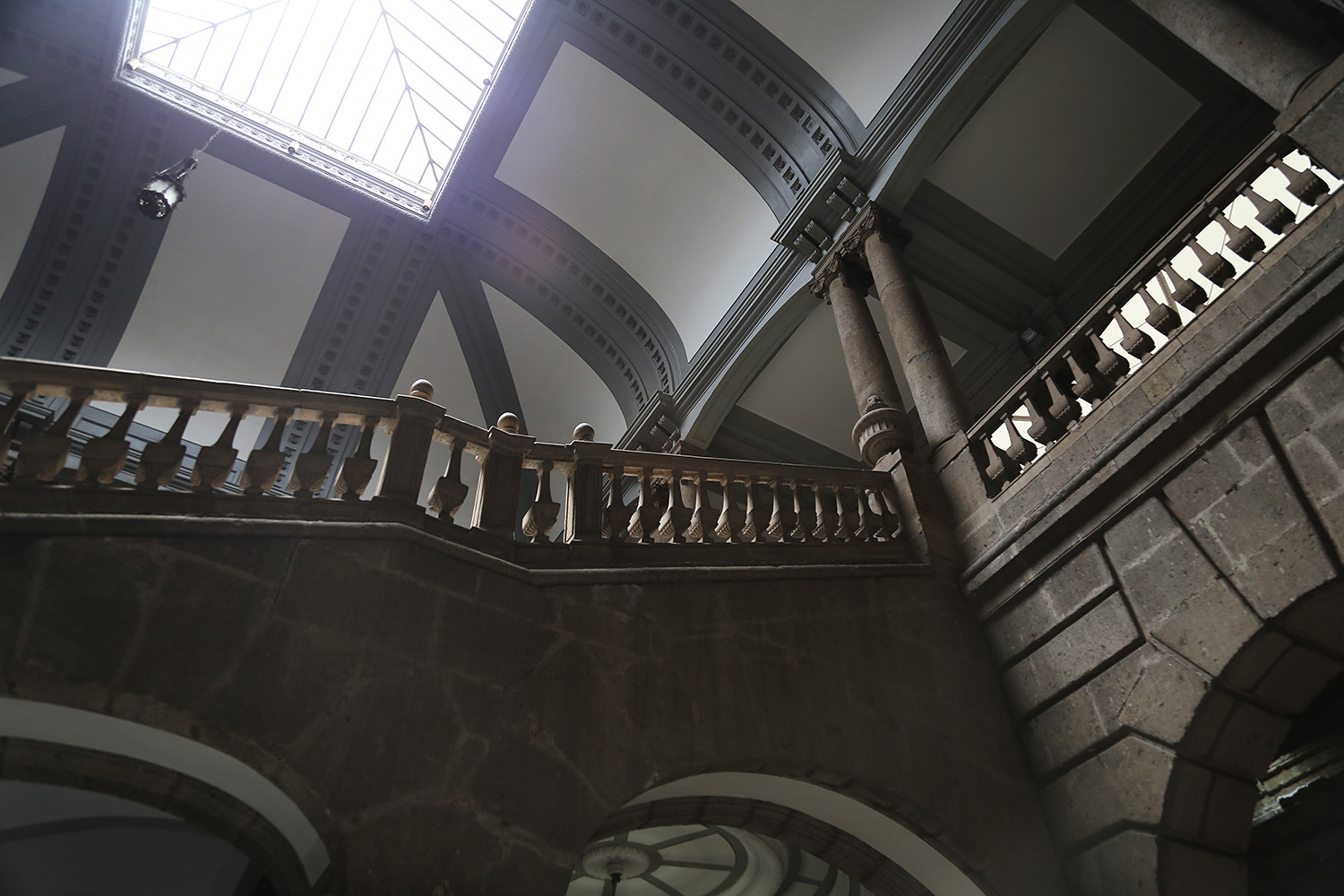
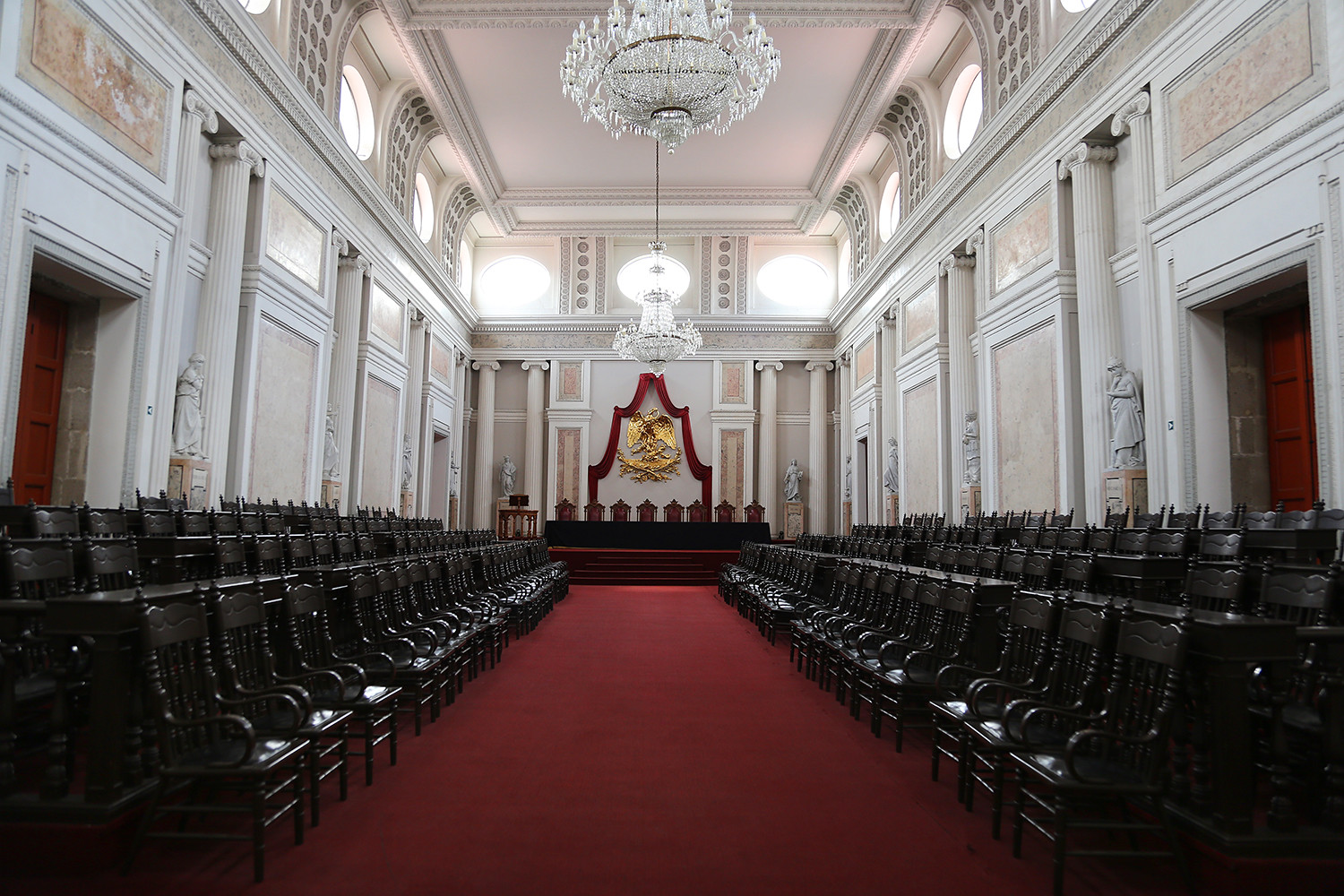
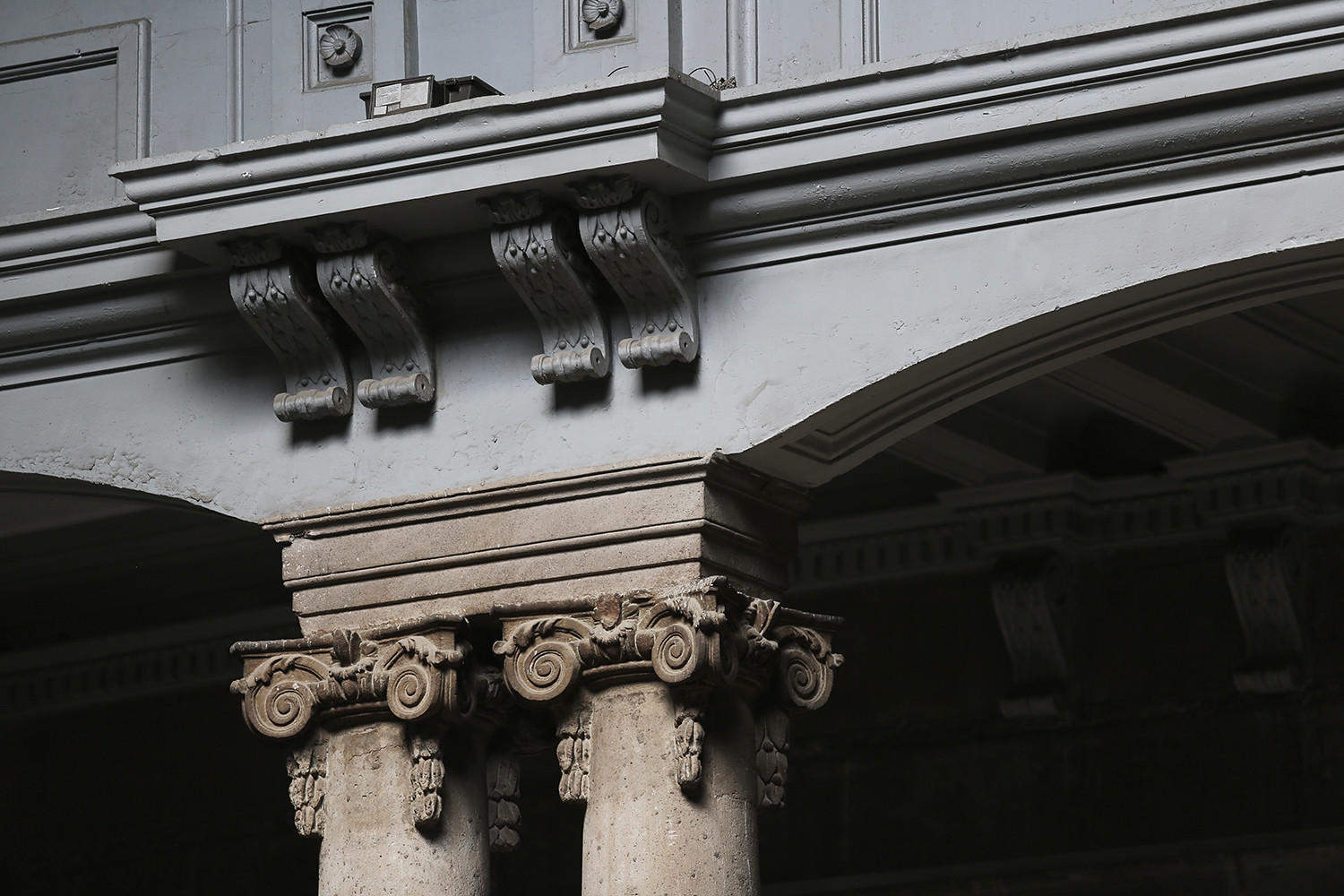
The Palacio de Minería, The Palace of Mining, was designed and built between 1797 and 1813 by the Valencian sculptor and architect, Manuel Tolsá.
Inside, a museum is dedicated just to him. The building was intended to house the Spanish Royal School of Mines and Mining. The magnificent palace later housed other institutions, among them, the National University, the School of Engineering, the College of Mines, and eventually, the Physics Institute of the National Autonomous University of Mexico.
It is today, a museum belonging to the UNAM Faculty of Engineering. Opposite the Plaza, also named for Manuel Tolsá, and the most recent home to his own equestrian statue Carlos IV of Spain, the Palacio de Minería is a spectacular place to visit and a rare example of Mexican deference to the rare colonial-era genius.
The Palacio de Minería dates back to 1793 when Tolsá was commissioned for the project. Tolsá also worked on the final stage of construction of the Metropolitan Cathedral, along with a slate of the era’s most prominent projects. The importance of mining as the main economic activity of New Spain becomes ever more obvious as one approaches.
In fact, the Enlightenment ideals of reason and order put to the attainment of knowledge are perhaps nowhere more artfully realized.
Later in the 1860s, the palace was considered for use as the imperial palace of Emperor Maximiliano. He chose the Castle of Chapultepec as his residence. Soon thereafter, the facility was again put to use housing the Special School Engineering and it remained as such for almost a hundred years. In 1954, the Faculty of Engineering moved to a different building in the University City.
Within the building one can still fine a stunning Courtyard, Lecture Hall, a chapel to the Virgin of Guadalupe and the lavish stairways. Part of the UNAM heritage sites, it is still the site of conferences, specialized courses, and events like the International Book Fair. It also houses the Museo Manuel Tolsá, along with the seats of several city and national organizations, among the m the Society of Alumni of the Faculty of Engineering.
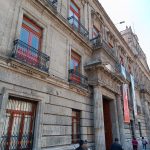 The extraction of silver and gold in New Spain was a very lucrative business, so its professionalization advanced during the viceroyalty. Between 1797 and 1813, Manuel Tolsá was commissioned to construct a building for the school of the Royal Mining Seminary. The result was an elegant palace, Tolsá's most important civil monument in the capital.
The building shows the sober lines and rigorous decoration of the neoclassical style. Its monumental façade, the portico is formed by elegant columns that support a sober triangular pediment. The majestic main staircase is in the center of the patio and gives access to the second floor, with its double colonnade and a chapel dedicated to the Virgin of Guadalupe. Paintings by Rafael Ximeno y Planes, also a master of the Academy of San Carlos, survive in this chapel.
Four meteorites that have fallen on Mexican territory are exhibited in the entrance hall.
The extraction of silver and gold in New Spain was a very lucrative business, so its professionalization advanced during the viceroyalty. Between 1797 and 1813, Manuel Tolsá was commissioned to construct a building for the school of the Royal Mining Seminary. The result was an elegant palace, Tolsá's most important civil monument in the capital.
The building shows the sober lines and rigorous decoration of the neoclassical style. Its monumental façade, the portico is formed by elegant columns that support a sober triangular pediment. The majestic main staircase is in the center of the patio and gives access to the second floor, with its double colonnade and a chapel dedicated to the Virgin of Guadalupe. Paintings by Rafael Ximeno y Planes, also a master of the Academy of San Carlos, survive in this chapel.
Four meteorites that have fallen on Mexican territory are exhibited in the entrance hall.
Heart of México Walking Route: Manuel Tolsá - S Veracruz Route
< < El Caballito | Palacio de Correos > >
Proyecto “Corredor de Cultura Digital”.
Nombre de la investigación: Investigación Centro Histórico, Monumentos, Edificios y Puntos de Interés (2023)
Dirección de investigación y diseño de Rutas: Acércate al Centro A.C. Guadalupe Gómez Collada
Coordinación e investigación histórica: Fideicomiso del Centro histórico Dir. Maestra Loredana Montes
 http://www.palaciomineria.unam.mx/
http://www.palaciomineria.unam.mx/
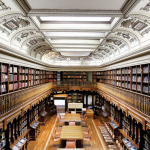
Nearest at 0.00 kms.
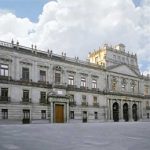
Nearest at 0.00 kms.
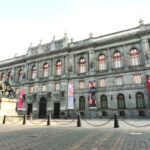
Nearest at 0.05 kms.
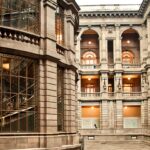
The National Art Museum in Mexico City's Centro Histórico is always going to be a holiday highlight.
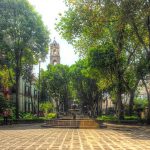
One of Mexico City's most beautiful historic squares, it's a meeting place for booklovers and dealers.
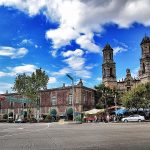
Presiding over Avenida Balderas like a fount of history, the Old Hipolito Church still strikes a somber chord.
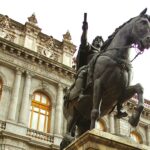
Perhaps more controversial than Sebastián's big yellow replacement, Charles the Fourth is still riding high.
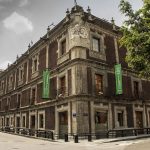
One of the most painstakingly restored 17th century complexes in the City, MIDE tackles a tough subject with style.